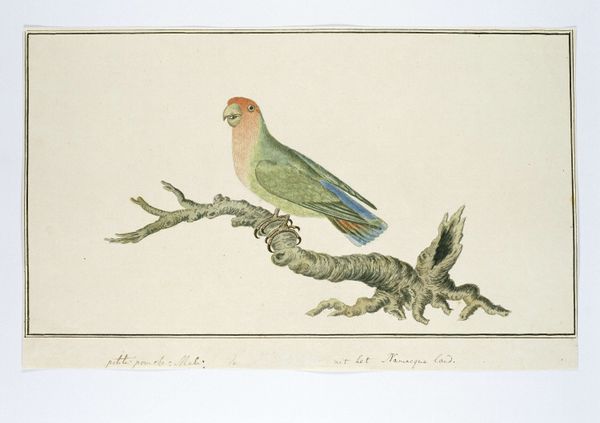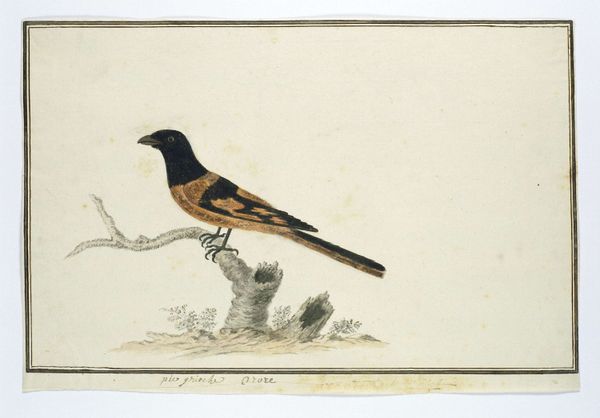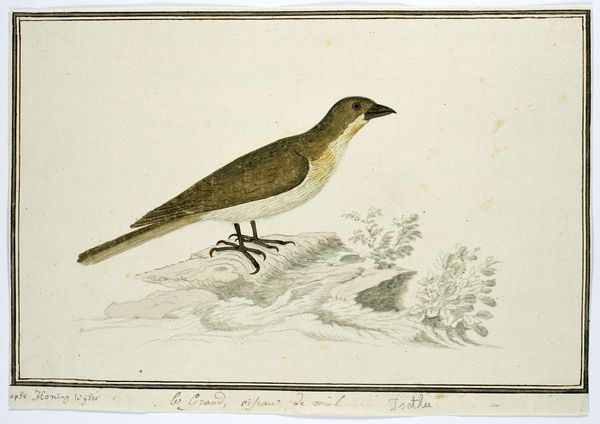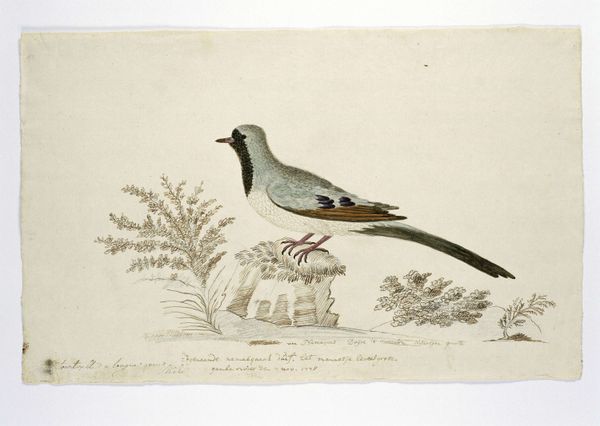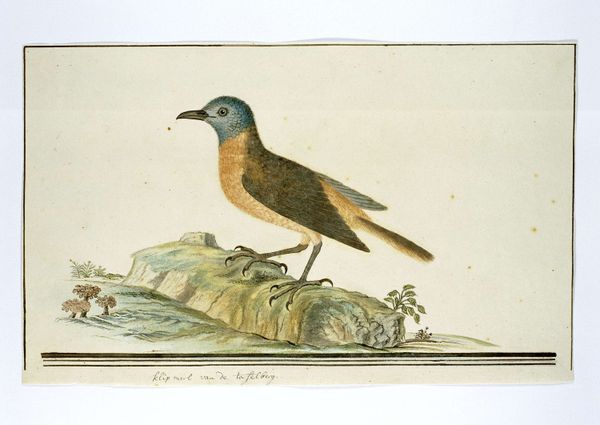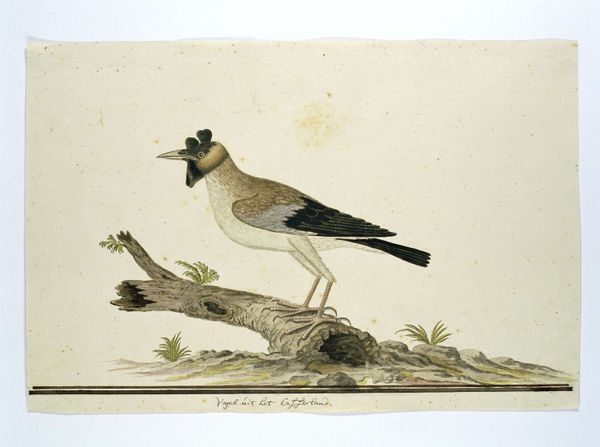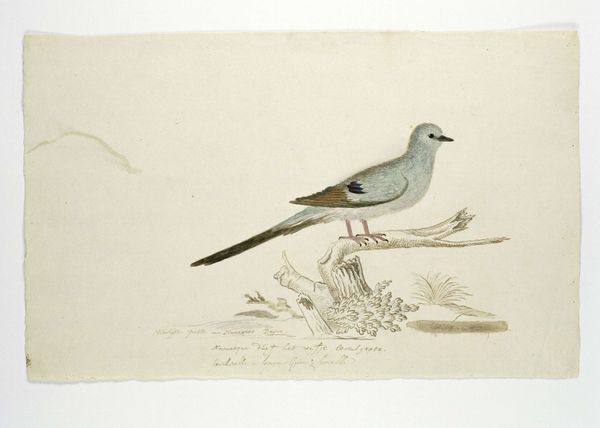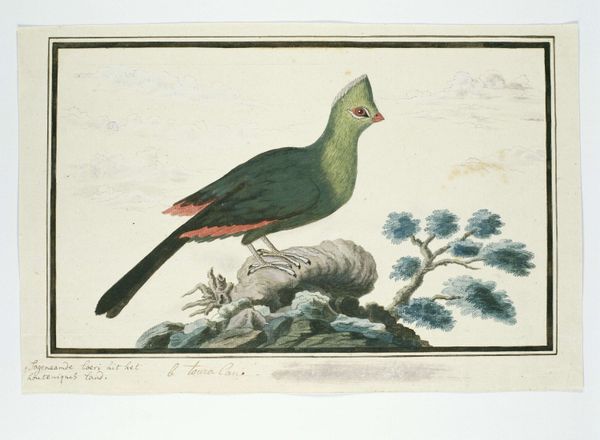
Dimensions: height 660 mm, width 480 mm, height 293 mm, width 404 mm, height 256 mm, width 392 mm
Copyright: Rijks Museum: Open Domain
Robert Jacob Gordon made this watercolor of an Apaloderma narina, or Narina trogon, somewhere without a known date. Gordon was a Dutch explorer, military officer, and naturalist of Scottish descent, who is best known for his extensive travels in southern Africa during the late 18th century. The image itself is a detailed rendering of a Narina trogon perched on a branch, set against a lightly sketched landscape. The bird is depicted with careful attention to its plumage and the colors are vibrant, suggesting a high level of skill and access to quality pigments. The creation of such detailed natural history illustrations speaks to the scientific and colonial interests of the time. The European powers were keen to document and understand the natural resources of the regions they explored and colonized. Gordon's image serves both scientific documentation and a form of cultural appropriation. To understand the image fully, we can draw on various archives, travelogues, and scientific papers from the period. In doing so, we see how deeply the making and meaning of art are embedded in the social and institutional contexts of their time.
Comments
No comments
Be the first to comment and join the conversation on the ultimate creative platform.
